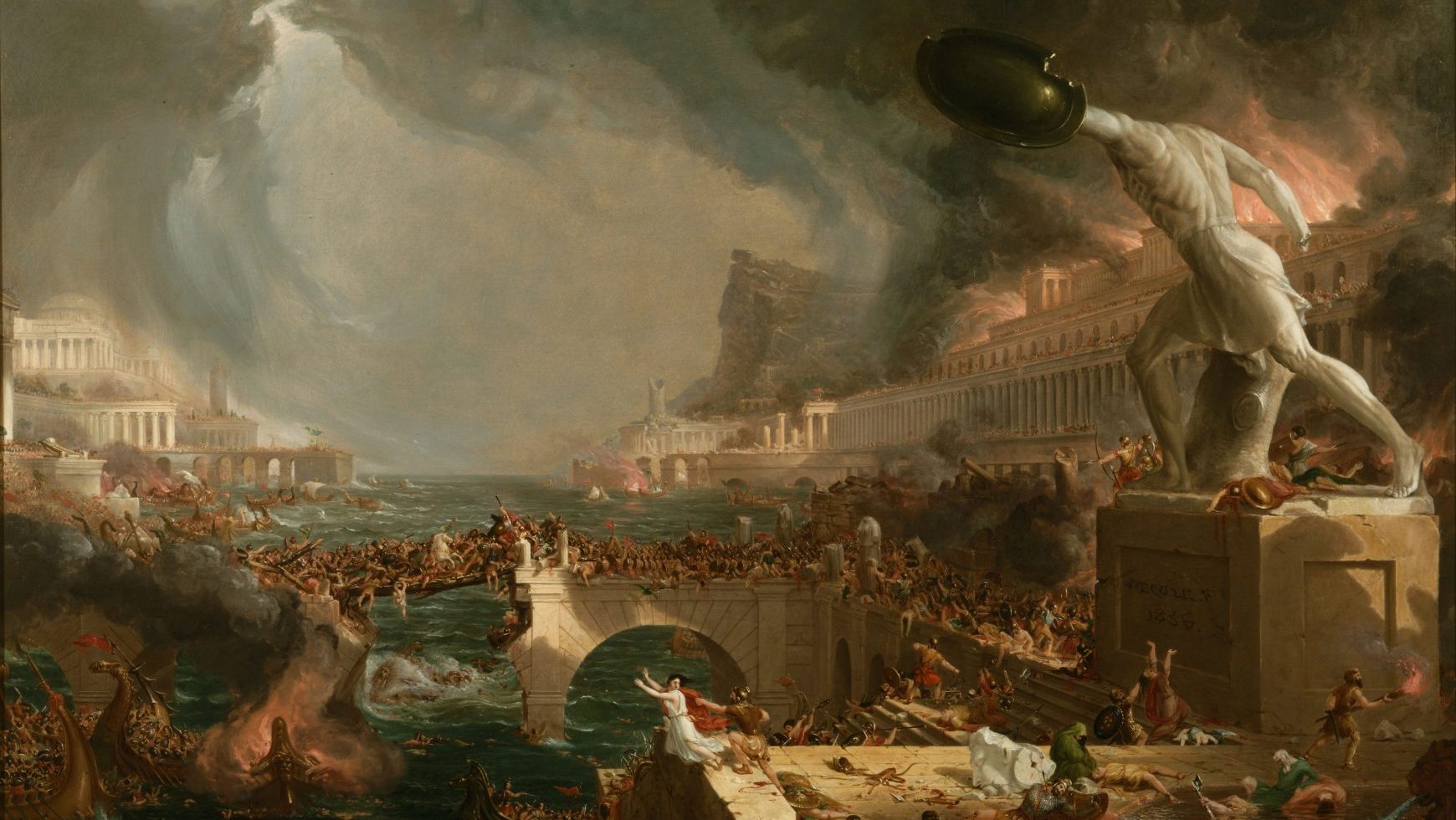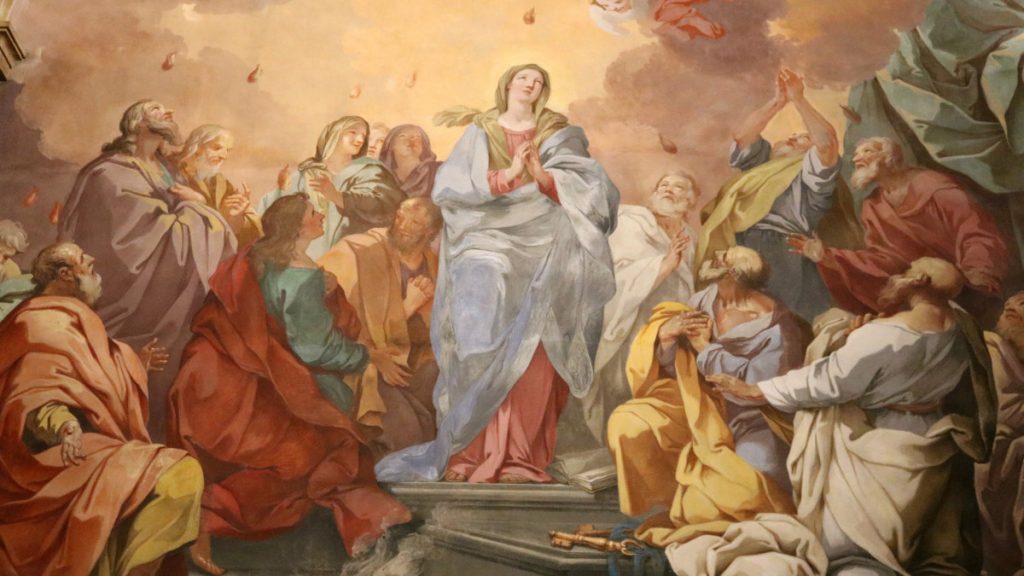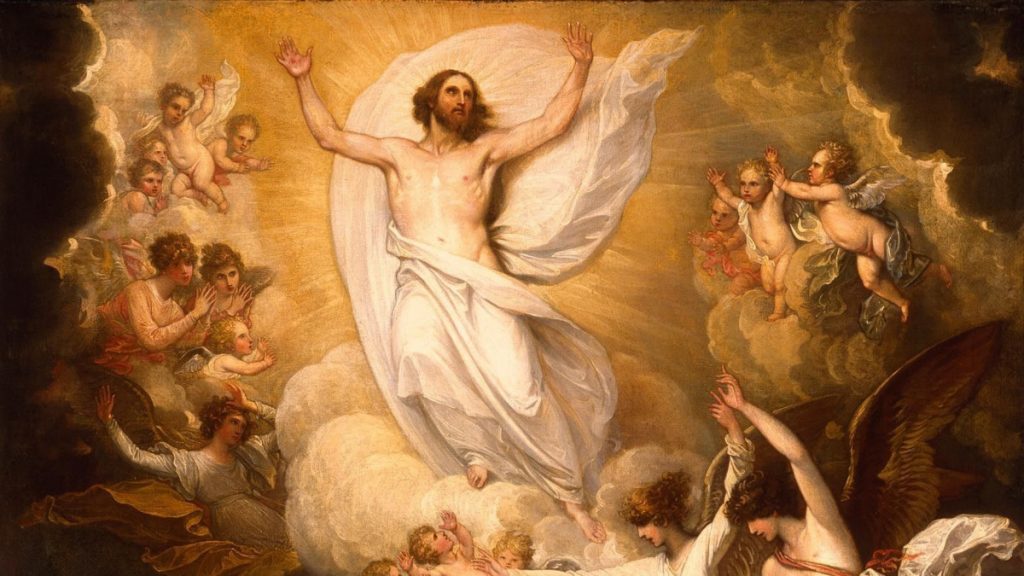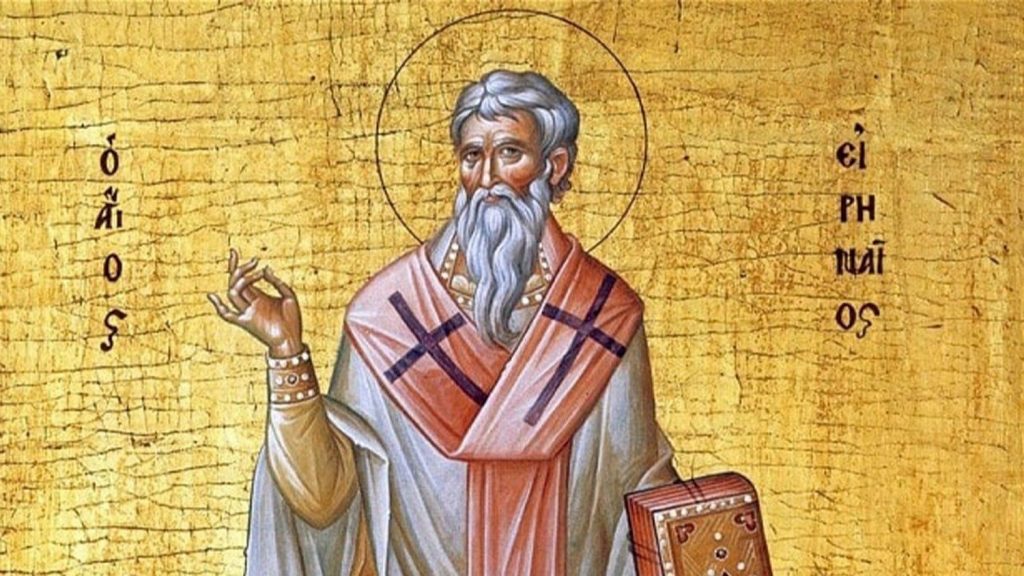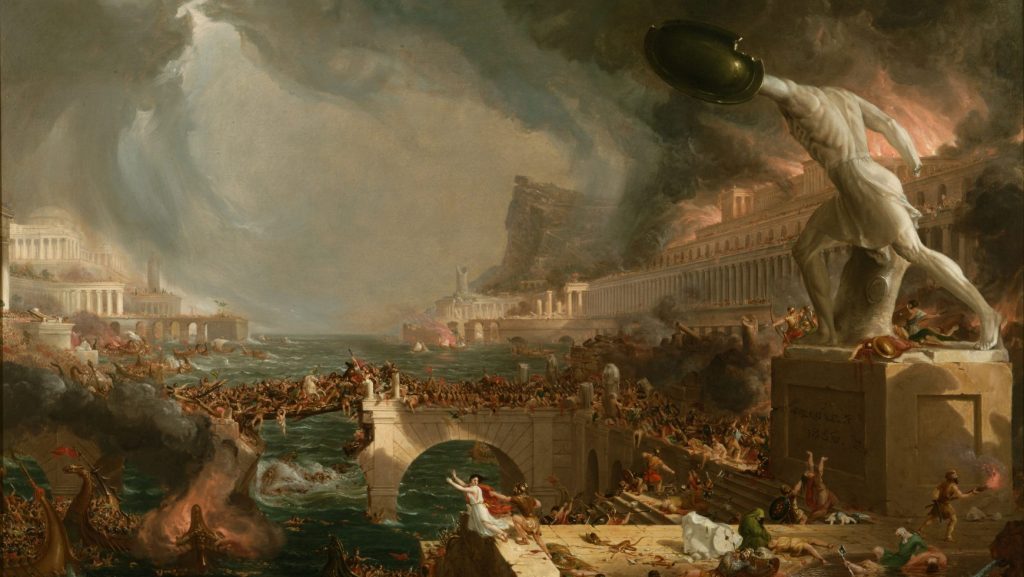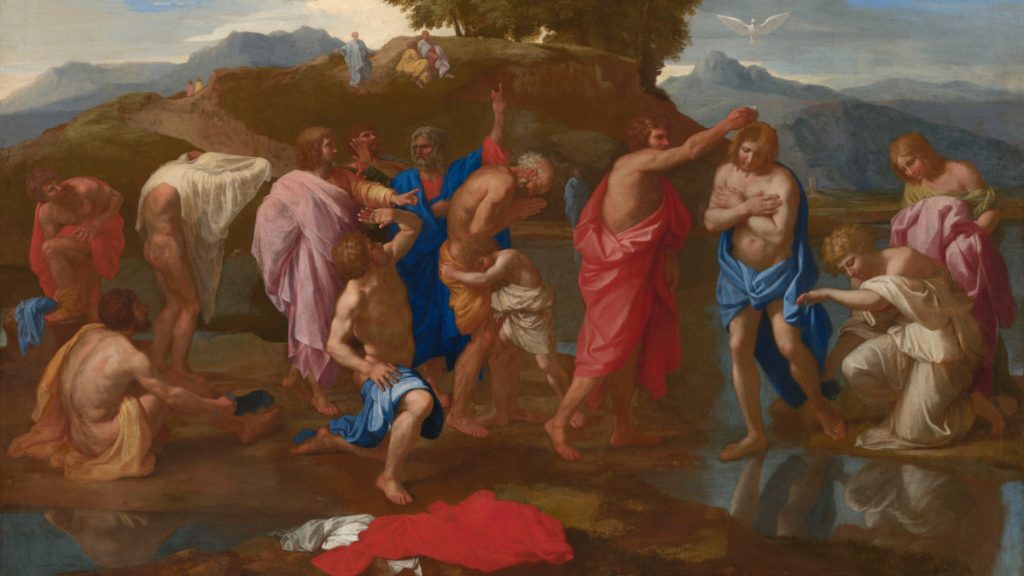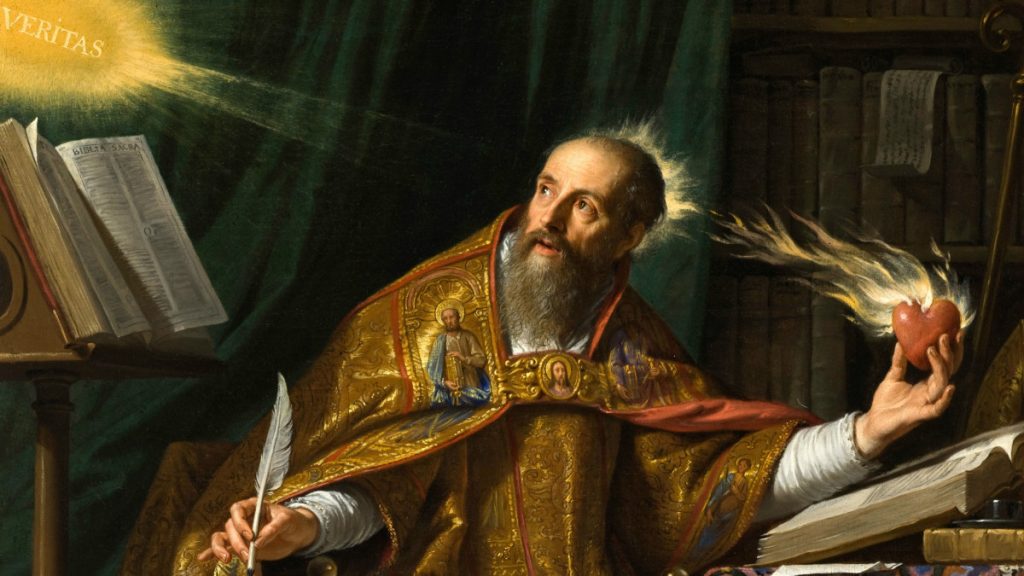This article was originally published on March 23, 2022, but has since been adapted for Becoming Catholic.
Introduction
We are now setting upon a new series about the end times we are calling Katechōn (the origin and meaning of this term will be explained momentarily).
The purpose of the Katechōn series is to present a new Theory of Apocalyptic History informed by the pure fountain of Sacred Scripture, the Church Fathers, the Saints, and the teaching of the Church that can help us have eyes to see and ears to hear in the midst of these apocalyptic times.
We call this a theory about “Apocalyptic History” not because it is purely about the “end times” (meaning, those times immediately preceding the dark advent of Antichrist, along with his reign prior to Christ’s return), but because it is attempting to offer a more penetrating analysis of not only the actors in history, but their role in history. But these actors and their roles can only be fully discerned in light of the end of history itself, which itself issues from the sovereign authority of Almighty God. Thus, while a good deal of our analysis will relate to the so-called “end times,” it is our goal in doing so to shed light on all of history, not just its final stretch.
The spirit with which we discuss “Apocalyptic History” can be aptly discerned in the book of Sirach (Sir. 7:36):
In all you do, remember the end of your life, and then you will never sin.
This verse rightly emphasizes the “end times” that each one of us will experience as individuals, when we will render an account of our lives before the Author and Judge of history. Contemplating our personal “end time” should always receive priority for the Christian, as opposed to historical theories about the “end times.” This habit of thought and deed the Church commends to Her children through things like a daily memento mori, or “memory of (our own) death.”
But it also has application, we believe, to a proper study of history in light of the apocalypse. The verse could be rephrased for the study of history as such as follows:
In all you theorize, remember the end of history, and then you will never err.
That is our goal in offering this new Theory of Apocalyptic History, whose purpose is not mere speculation about the “end times,” but to illuminate the study of history itself.
This “new” theory is not, we believe, fundamentally new or novel—though it does claim to build upon and refine older ideas. It retains many of the most basic assumptions and conclusions of, for example, St. Augustine’s City of God, most notably the idea that all of humanity can be divided into two camps: Christ vs. Antichrist, the City of God vs. the City of Man, the Body of Christ vs. the Body of the Devil, the Church vs. the World, etc.
However, in the course of this ongoing study (which we began in earnest just prior to the Lockdowns of March, 2020), we discovered that there is another camp–one that does not exist on its own, and is in fact merely an extension of Antichrist. But it clothes itself as if it belongs to Christ. It is, in short, the Body of the Devil which hides itself “inside” the visible Body of Christ. This “third” camp, what we simply call the “Anti-Church,” we discovered, is found throughout Sacred and Temporal history, and operates by its own set of unique principles and patterns based on its unique role in history—including in the “end times.”
We will lay out the fundamentals and details of this theory in a forthcoming book we are entitling The Foolishness of God, which is the name we have already given to the portion of Becoming Catholic articles about the end times. This phrase comes from St. Paul (1 Cor. 1:25):
For the foolishness of God is wiser than men, and the weakness of God is stronger than men.
In context, St. Paul is discussing the the Passion of Christ, which, as we will argue, is itself a type for the end times “Passion of the Church.” Understanding how “foolish” such events can appear according to man’s wisdom is an essential insight we hope to impart, drawing from the examples of Our Lady, St. John, and others, who understood more than anyone else the deep mystery of Our Lord’s Passion, and thereby avoided being scandalized as most others were. If we, likewise, fail to understand the deeper mystery undergirding both the “end times” and history as a whole, we too will be scandalized, and miss the reality of what God has done and is doing.
In this first article on this topic, Katechōn #1, we are merely laying out the basics of this new Theory of Apocalyptic History, by which I mean we will be stating some of our most fundamental conclusions, the arguments for which we will unpack in greater detail in future installments.
We do not claim that each of our conclusions are unique to us—our purpose is not to concoct novelty. However, we do believe we’ve been able to synthesize many of the greatest minds of the Church into a new Theory of Apocalyptic History that is in fact somewhat unique, and builds upon and refines old, tried, and trusted truths that have been articulated and refined since the earliest days of the Church. We share the fruit of that labor (which is ongoing) because we believe it can provide a great deal of clarity in these confusing, indeed (we believe) apocalyptic times—or at the very least raise issues for discussion among the charitable that can perhaps lead to even greater insight.
Whether or not these are the end times immediately preceding the return of Our Lord Jesus Christ, they are nonetheless the end of our times of Christian civilization. This seems beyond doubt. As such, according to the principle that the purpose and right use of a thing is defined by its end, we offer these eschatological reflections in the hope that they rightly orient each one of us to our own personal ends, namely, the day on which we will die and stand before the Judge before whom we shall account for all that we have done and failed to do.
Roadmap
With this purpose in mind, our Roadmap is as follows:
- Our purpose in this first article of the Katechōn series is to lay out the basics of our new Apocalyptic Theory of History, the details of which we will dive into in later articles. We will provide the outlines of this thesis by doing the following:
- Identifying the katechōn in Scripture;
- Identifying what we believe is the identity of the katechōn;
- Identifying the “Two Combatants, Three Teams” of history;
- Discussing the binding and loosing of Satan, and its role in history;
- Discussing the Passion of Christ as a type of the end times Passion of the Church;
- Summarizing the broad outlines of our New Theory of Apocalyptic History; and finally
- Laying out our overall plan for approaching this subject going forward.
What is the Katechōn?
First, a definition of the term that is so central to this topic: katechōn.
The term katechōn is used by St. Paul in 2 Thessalonians 2:6-7. But we will quote surrounding verses to provide adequate context (2 Thess. 2:1-12):
Now concerning the coming of our Lord Jesus Christ and our assembling to meet him, we beg you, brethren, 2 not to be quickly shaken in mind or excited, either by spirit or by word, or by letter purporting to be from us, to the effect that the day of the Lord has come. 3 Let no one deceive you in any way; for that day will not come, unless the rebellion comes first, and the man of lawlessness is revealed, the son of perdition, 4 who opposes and exalts himself against every so-called god or object of worship, so that he takes his seat in the temple of God, proclaiming himself to be God. 5 Do you not remember that when I was still with you I told you this? 6 And you know what is restraining him [τὸ κατέχον] now so that he may be revealed in his time. 7 For the mystery of lawlessness is already at work; only he who now restrains it [ὁ κατέχων] will do so until he is out of the way. 8 And then the lawless one will be revealed, and the Lord Jesus will slay him with the breath of his mouth and destroy him by his appearing and his coming. 9 The coming of the lawless one by the activity of Satan will be with all power and with pretended signs and wonders, 10 and with all wicked deception for those who are to perish, because they refused to love the truth and so be saved. 11 Therefore God sends upon them a strong delusion, to make them believe what is false, 12 so that all may be condemned who did not believe the truth but had pleasure in unrighteousness.
Thus, St. Paul makes clear that since the first century, there has been a “mystery of iniquity” at work which will culminate in the revelation or apocalypse of Antichrist. But in the meantime, it is restrained by something—the katechōn—that St. Paul refers to in two ways: as a “what” and a “he.” Once this restrainer, this katechōn, ceases to restrain, the Antichrist shall appear as the final sign that precedes Our Lord’s return.
Katechōn = Christendom
Many have speculated as to what the katechōn could be. We will certainly be covering many of those opinions in the future, and explain how we arrived at our own conclusion as to its identity.
In short, we contend the katechōn is Christendom in both its spiritual and temporal aspects, and preeminently the Pope/papacy as its highest earthly authority and head.
As such, Christendom is that which “restrains” the mystery of iniquity, and thereby delays the coming of Antichrist. Its power to do so was purchased by Christ’s blood on the cross, and conveyed to the Church by His resurrection. Initially, temporal rulers did nothing but persecute the Church. But eventually, many of them submitted to Christ the King, which in practice meant submitting their temporal sword to the higher spiritual sword of the priestly hierarchy, preeminently the Pope. For the first time in history, the God of Abraham, Isaac, and Jacob was worshiped throughout the nations. The law of the Gospel became the laws of kingdoms. The Vicar of Christ became the shepherd of nations.
But prior to Christ’s return, things will look quite different–or perhaps even quite similar to the earliest age of martyrdom in which the Church was inaugurated.
Two Combatants, Three Teams
As previously alluded to, we contend humanity consists of ultimately two combatants: those on the side of Christ, and those on the side of the Devil. We will most often refer to these as the Church and the World.
However, there is a portion of those in the World who follow the Devil, but pretend to follow Christ. This “third” portion is the Anti-Church, and while it is part of the World, it operates in a fashion that is unique in history, and has its own unique types throughout Scripture. The part of the World that remains outside the Church operates one way, and the part of the World that shrouds itself within the Church (the Anti-Church) operates in another, though both have the same purpose: the destruction of the Church. The mystery of iniquity, therefore, is the power of the World–both outside the Church, and the Anti-Church within–in combination against the “true” Church, as it were. This power is restrained by the Church/Christendom for a time so that the Gospel may be preached to every nation. But eventually, by God’s permission, it will no longer be restrained, and the full force of the World and the Anti-Church will be brought to bear on the Church from without and within respectively. This is a consistent pattern throughout history, one that is exemplified, as we will show, in the Passion of Christ Himself.
To conclude: history’s actors fight for only one of two combatants (Christ or the Devil), but in three possible teams (the Church, the World, and/or the Anti-Church). As such, history is the story of how the World and the Anti-Church ally together to destroy the Church; and the end of history will witness the final and most catastrophic alliance of the World and the Anti-Church in the final persecution of the Church that precedes Our Lord’s return and ultimate victory.

The Binding and Loosing of Satan
This historical dynamic is very much connected to the binding and loosing of Satan.
Christendom, while founded by Christ, was never intended to defeat Satan in a temporal sense prior to Christ’s return. This will be achieved by Christ Himself, in person. Rather, Christendom restrained Satan, thanks to his being bound by the power of Christ’s cross and resurrection. This is what enabled Christendom to restrain the mystery of iniquity so that it might grow and expand until the Gospel had reached every nation on earth.
But Scripture indicates that prior to Christ’s return, Satan will once again be released for a period of time. The typology of this event is contained in the prophets, in Christ’s parables, the Passion narrative, and the loosing of Satan itself is stated explicitly in the Apocalypse. This release will correspond with the virtual disappearance of Christendom, as the nations who once shouted “Hosanna in the highest!” now declare “crucify Him!” and “We have no king but Caesar!” The process by which Christendom rose will then be reversed. Temporal swords once submitted to Christ will apostatize from Him and His Church. The katechōn, or restrainer, will no longer restrain. This will coincide with the Great Apostasy prophesied by St. Paul. The mystery of iniquity that had been held back since Our Lord’s death and resurrection will burst forth, culminating in the unveiling of Antichrist.
The Passion of Christ a Type of the Passion of the Church
This final apocalyptic unveiling of Antichrist will involve the worst persecution the Church has ever endured.
The typology of the Church, the World, and the Anti-Church, alongside the understanding of Christendom (and preeminently the papacy) as the katechōn, provides an exceptionally clarifying lens with respect to the end times.
The apostolic method of reading Scripture is deeply typological. The mysteries of the Old Testament foreshadow those of the New Testament, and the mysteries of the New Testament are shrouded in the Old Testament. Understanding this relationship is the key to understanding many of Scripture’s deepest mysteries.
But the fact that typology is a fundamental reality of Scripture means something else: it is a fundamental reality of history as well, for types and fulfillments refer to realities in history that are somehow connected. Events in the past prefigure events in the future. What has happened before contains the kernels of what shall happen again, but under a different guise, with different actors. The Sacred history contained in Scripture testifies to this reality over and over again. But so does temporal history, which has led to the well-known aphorisms “History repeats itself,” or (the version we prefer), “History may not repeat, but it does rhyme.” Thus, what secular historians perceive by reason to be repetition and rhyming in temporal history, Christ and the Apostles show to be the far higher reality of typology in Sacred history. And since in Christ, the God-man, history finds its meaning and end, the Spiritual and the temporal—while distinct—can never again be separated after the establishment of the Messianic kingdom by His cross and resurrection. In the Incarnation, the Sacred enters the temporal that it has assumed, permanently. Therefore, history is no longer merely a series of repetitions and rhymes. History itself is typological.
This reality is of decisive importance when it comes to the study of the end times. By this method, as well as the teaching of many Saints and the Magisterium itself, we have concluded that the Passion of Christ in His individual person—while it was the fulfillment of various types in the Old Testament—became, itself, a new type of what the Church, as His Corporate Person (or Mystical Body) on earth, will undergo prior to His return. Here is how the Catechism of the Catholic Church explains it (pars. 675-77):
675 Before Christ’s second coming the Church must pass through a final trial that will shake the faith of many believers [Luke 18:8; Matt. 24:12]. The persecution that accompanies her pilgrimage on earth [Luke 21:12; John 15:19-20] will unveil the “mystery of iniquity” in the form of a religious deception offering men an apparent solution to their problems at the price of apostasy from the truth. the supreme religious deception is that of the Antichrist, a pseudo-messianism by which man glorifies himself in place of God and of his Messiah come in the flesh [2 Thess. 2:4-12; 1 Thess. 5:2-3; 2 John 7; 1 John 2:1, 8, 22].
676 The Antichrist’s deception already begins to take shape in the world every time the claim is made to realize within history that messianic hope which can only be realized beyond history through the eschatological judgement. the Church has rejected even modified forms of this falsification of the kingdom to come under the name of millenarianism [DS 3839], especially the “intrinsically perverse” political form of a secular messianism [Pius XI, Divini Redemptoris, condemning the “false mysticism” of this “counterfeit of the redemption of the lowly”; cf. GS 20-21].
677 The Church will enter the glory of the kingdom only through this final Passover, when she will follow her Lord in his death and Resurrection [Apoc. 19:1-9]. The kingdom will be fulfilled, then, not by a historic triumph of the Church through a progressive ascendancy, but only by God’s victory over the final unleashing of evil, which will cause his Bride to come down from heaven [Apoc. 13:8; 20:7-10; 21:2-4]. God’s triumph over the revolt of evil will take the form of the Last Judgement after the final cosmic upheaval of this passing world [Apoc. 20:12; 2 Pet. 3:12-13].
In this type of the end times, we see the preeminent example of how the Church, the World, and the Anti-Church operate, not only throughout history, but particularly during the end of history. In Christ Himself, and those few who remained with Him, we see the Church. In a large portion of the Jewish hierarchy, and those who followed them (either out of conviction or cowardice), we see the Anti-Church. And in the Roman authorities, we see the World. As the Anti-Church allied with the World to destroy Christ and His (very small) Church during His Passion, so too shall the Anti-Church ally with the World in the end times to destroy Christ and His (we suspect) much smaller Church prior to His return.
Likewise, on Good Friday, it appeared that the “gates of Hell” had prevailed against the Church. Peter was a no-show, along with all but one of the Apostles. Many of the leaders of the Messiah’s own people had allied with the world to crucify Him. They mocked His claim to be a King and “the Son of God,” the sole means of salvation, crying “We have no king but Caesar!” as they nailed Him to the cross. The Shepherd was struck by His own and by the world, and crucified outside the walls of the very city He had established for Himself, accompanied only by Our Lady, St. John, and a few devoted women.
And yet, three days later, He rose again, conquered death and His enemies, making the way of salvation open to them in the process. The Apostles returned, and Peter was restored. The gates of Hell had not prevailed. Those who believed as much were deceived. Those who kept the Faith even while their Messiah hung dead were vindicated.
We believe the Passion of the Church will follow a similar pattern, in fulfillment of this original type.
A New Apocalyptic Theory of History
With all this in mind, we will now summarize this new Apocalyptic Theory of History in broad, thematic strokes.
With the fall of man, sin and death reigned in the world. The vast majority of mankind fell into error. Satan became lord of the world by virtue of humanity’s defection.
But God maintained a small remnant of people with whom He maintained a covenant by which they could obtain the end for which He had originally designed humanity, namely eternal life. Originally, this covenant was made with individuals (the Patriarchs). Then it expanded to include one particular people, the Israelites. Finally, it expanded to include all peoples—both Jew and Gentile—in the Catholic Church.
This Catholic Church is the City of God, the Body of Christ, on earth and in heaven, and is opposed to the City of Man, the Body of the Devil, the World, and ultimately Antichrist. In Christ, the New Adam, the world is no longer ruled by Satan, for the old humanity has been remade, and thereby reinstated by God. Satan has been bound. However, his followers remain, and fight the expansion of Christendom to every nation—many even hide themselves within Her bosom to undermine Her from within. This is the Anti-Church, constituting the “third” part of humanity.
The Anti-Church at all times allies with the World (both belonging to the old humanity) to destroy the Church (the new humanity). But despite their best efforts, the Church continues to grow and expand, exercising not only the spiritual sword through Her priesthood, but the temporal sword through Her lay rulers. She is enabled to do this by the power won for Her by the cross and resurrection of Her Lord, which bound Satan, and enables Her to restrain the mystery of iniquity so as to accomplish Her mission of evangelizing the nations.
But at a point proximate to His return, Our Lord in His sovereignty and providence decides to release Satan. Thus, the enemy whose binding allowed Christendom to grow and expand is once again allowed to return to a simulacrum of his former power in the lead up to his final confrontation with Christ. This will coincide with the Great Apostasy of the nations from the Catholic Church, which will include temporal powers reverting to their pre-Incarnation state, and (likely) an undermining (though not destruction of) the spiritual power of the priesthood. Satan knows his time is short. Thus, he and his body—the World and the Anti-Church—persecute the Church with unparalleled ferocity, culminating in the last and final persecution of Antichrist just as Christendom all but ceases to restrain the mystery of iniquity which now bursts forth without Her in the World, and within Her by the Anti-Church. This is the Passion of the Church, which, just as the Passion of Christ, precedes Her final resurrection to meet Her Lord upon His return. But even as the earthly fortunes of the Church Militant reach their nadir, the Church Triumphant in heaven continues to grow without ceasing. Its final triumph is nearest when the fortunes of the Church Militant are at their lowest.
In this theory we have thus harmonized the cyclical and linear views of history into one coherent whole. History is neither purely linear, nor purely circular: it is both. And the rotations of these cycles will increase in severity, as birth pangs, as they approach their end with Christ’s return.
The Plan of the Katechōn Series
Understanding this mystery, and the insights it contains for the life of Christians as individuals, and as members of the Church on their pilgrimage through history–particularly in these apocalyptic times–is the purpose of the Katechōn series.
In this series, we will attempt to share the fruits of our study, and its possible implications, with anyone who will listen. At various points, we will articulate ideas we believe are basically and even undeniably true. At other times, we will engage in open speculation on related matters, including current events to which our theory may provide insight. If our research leads us to different conclusions, we will state them, and why. We will attempt to go as deep as possible, in as bite-size pieces as possible. For us, the discoveries we have made have brought a great deal of peace in the midst of our present calamities, both for ourselves, and others.
I will emphasize again that it is our view that we are not in the end times, we are certainly at the end of our times, meaning, we are at the very obvious end of an epoch. By this, we acknowledge that the end times are, to some degree, shrouded in mystery (though, we believe, not to the degree commonly alleged). Thus, at minimum, we consider it certain that we are at least at the end of our times of Christian civilization; and as such, if this new Theory of Apocalyptic History is correct, it will retain profound explanatory power even if generations yet remain between ourselves and the arrival of the Man of Sin.
